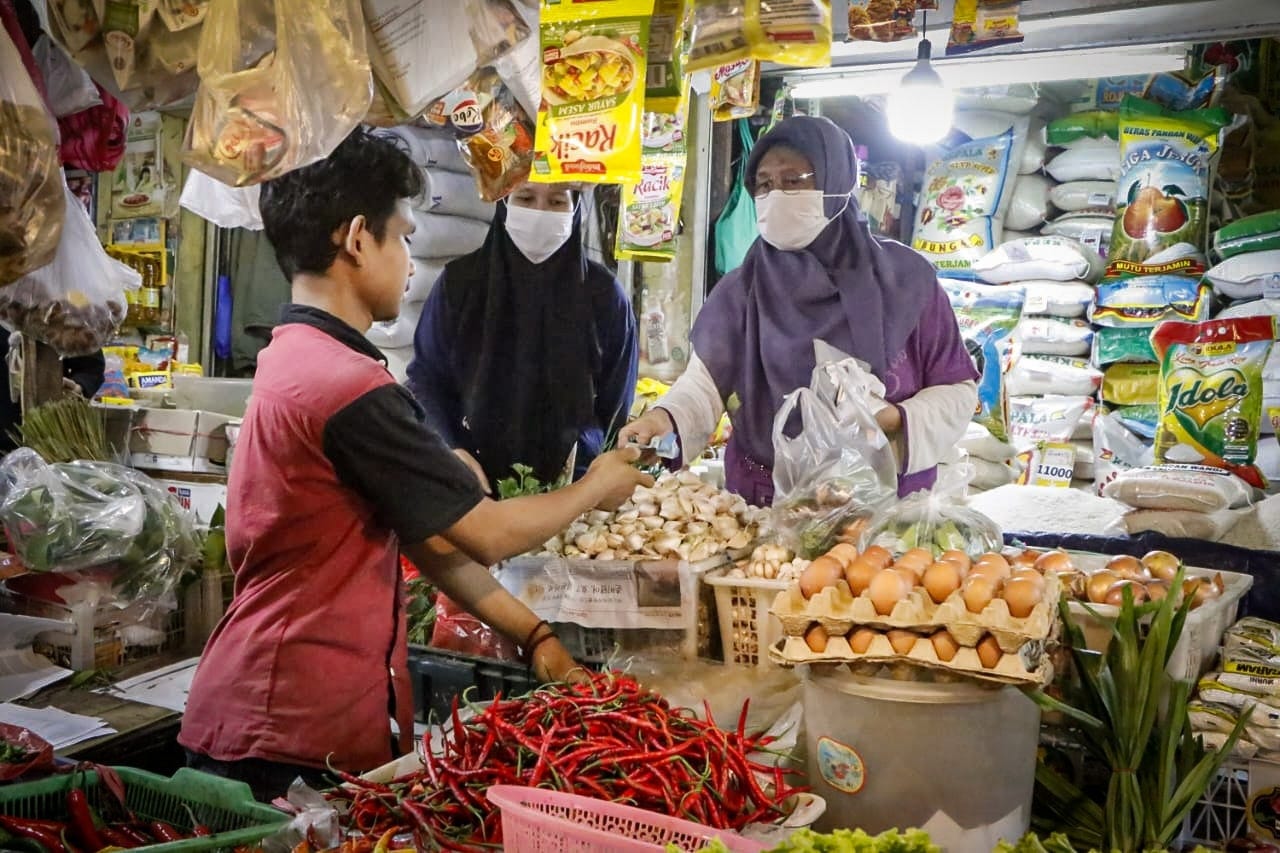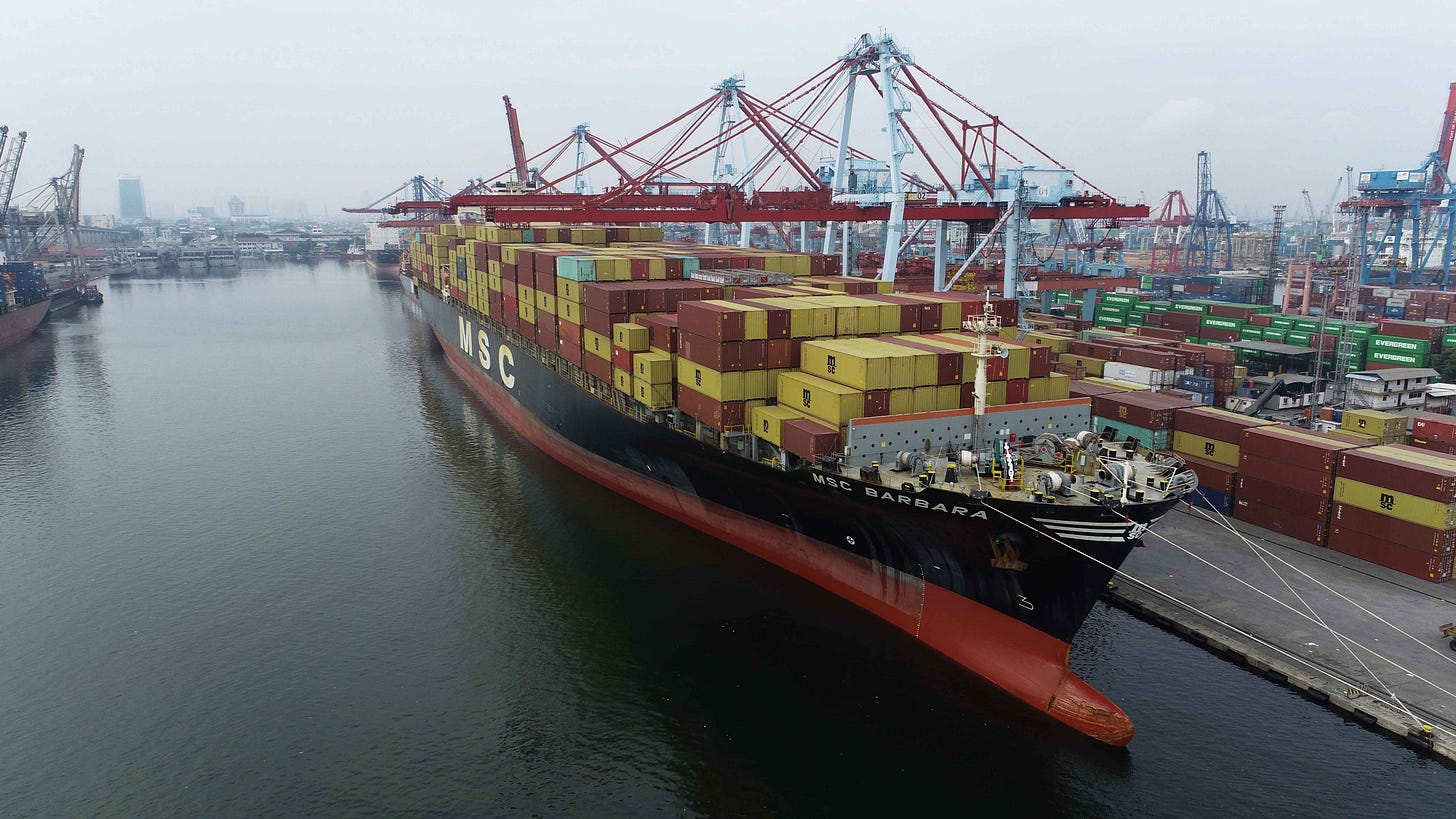📉 Indonesia’s GDP plunged to 5.04% in Q3 2025
Public spending dropped after the seasonal holidays, despite rising demand for steel and iron
🎯 The Main Takeaway
Indonesia’s economy grew 5.04% year-on-year in Q3 2025, according to Statistics Indonesia (BPS) — slightly below Q2’s 5.12%, but above Q3 2024’s 4.95%. 📊
The modest slowdown came as public spending dipped following the seasonal surge during Q2’s religious holidays. Still, household consumption, exports, and rising domestic and international demand kept overall growth steady, underscoring Indonesia’s continued resilience amid global uncertainty. 🌏💼
“Household consumption is affected by seasonal cycles, as Q3 has shorter holidays than Q2, when long Eid al-Fitr and Eid al-Adha breaks boosted spending and travel,” Amalia Adininggar Widyasanti, Head of BPS.
Why It’s on Our Radar 🔍
According to the Worldometer, Indonesia’s population reached over 280 million in 2025. With ASEAN’s total population at around 700 million, Indonesia accounts for about 40% population, making it the region’s most populous country.
Indonesia needs to adapt to ongoing global economic uncertainties, including:
Regional conflicts - between Russia-Ukraine, Israel-Palestine, and parts of Africa.
Trade wars - between the U.S. and China, and US tariffs on its trade partners.
Climate change - caused by greenhouse gas emissions from burning fossil fuels.
The rise of AI — through the integration of artificial intelligence technology into daily life.
⚠️ Why It Matters
These global headwinds are shaping the outlook for Indonesia’s economic growth in the coming quarters:
⚔️ Regional conflicts, trade wars, and U.S. tariffs are fueling market volatility, disrupting export flows, and raising production and import costs. Indonesia faces growing pressure to diversify trading partners to maintain balance and resilience.
📉 The global economic slowdown is weakening supply chains and consumer demand, threatening Indonesia’s manufacturing and service sectors.
🌱 Climate change is forcing policymakers to accelerate the green transition — investing in renewable energy, sustainable industries, and climate adaptation to meet the net-zero 2060 target.
🤖 The rise of AI could automate key industries, increasing efficiency but also risking job displacement and lower household purchasing power if workforce reskilling lags behind.
In short, Indonesia’s growth will depend on how well it can adapt, diversify, and innovate amid a more unpredictable global economy. 🌏💡

Why This Hits Home ❤️
Indonesia aims to achieve several targets in 2025, including:
State revenue: IDR 3,005.1T.
GDP growth: 5.2% in 2025 and 8% in 2029.
Inflation: 2.5%
Unemployment rate: 4.5 - 5%, and create 19 million jobs nationwide.
Poverty rate: 7 – 8%
Investment: IDR 1,905.6T
The Big Picture 📸
According to Statistics Indonesia, the main contributors to GDP growth by the group in Q3 are:
Production group:
The processing industry is the top contributor (19.15%) for Q3 growth, followed by agriculture (14.35%), trade (13.19%), construction (9.82%), and mining (8.51%).
The processing industry grew by 5.54%, driven by rising global demand for steel and iron products (18.62%), chemical and pharmaceutical products (11.65%), and CPO products (6.49%).
Expenditure group:
Household consumption was the largest contributor (53.14%) to Q3 growth, followed by investment (29.09%) and exports (23.64%).
Household consumption grew 4.89%, driven by higher spending on transport, communication, mobility, and tourism.
Achievements 🏆
Indonesia made several progress by Q3 2025, including:
State Revenue — recorded at IDR 1,863.3T by September (62% of the target).
GDP Growth — recorded at 5.04% in Q3, 5.12% in Q2, and 4.87% in Q1.
Inflation — recorded at 2.86% in October, 2.65% in September, and 2.31% in August.
Unemployment rate — recorded at 4.85% in August, up from February (4.78%) but down from August 2024 (4.91%).
Poverty rate — recorded at 8.47% in March, down from August 2024 (8.57%)
Investment — reached IDR 1,434.3T by Q3 (75.3% of the target).
Jobs created — 1.95 million jobs created by September (10% of the target).
Trade Surplus — 65 consecutive months, and USD 33.48 billion in total from January to September, up from USD 21.98 billion in the same period of 2024.

What’s at Stake ⚖️
Indonesia needs to improve several areas to boost future GDP, including:
Policy reform both in fiscal and monetary policies should better support growth, ensure business certainty, and keep inflation and interest rates under control.
Simplify regulations to attract more domestic and foreign investment for infrastructure development, as well as open new business.
Adapt and innovate through more R&D to create new products and adopt technologies that improve budget efficiency, digitally ready, and environmentally friendly.
Develop the workforce by creating more jobs to reduce unemployment and poverty, followed by provide some training to enhance skills,improve competitiveness, and increase purchasing power in the surge of AI.
Diversify products by expanding downstream industries and exploring new commodities or sectors to boost state revenue.
Expand exports by opening trade with new countries and adding export products, while limiting imports except for growth-boosting capital equipment.
Regional Lens 🌏
Vietnam :
Vietnam’s GDP grew 8.23% year-on-year in Q3, up from 8.19% in Q2, marking the highest growth in the country since 2011.
The growth was mainly driven by manufacturing and processing (9.98%), industry and construction (9.46%), services (8.54%), as well as agriculture, forestry, and fisheries (3.74%).
Malaysia :
Malaysia’s GDP grew 5.2% year-on-year in Q3, up from 4.4% in Q2, driven by strong performance across all sectors.
Domestic demand remains the main growth driver, especially services (5.1% growth in wholesale, retail, transport, accommodation, F&B), followed by manufacturing (4%), mining (10.9%), and construction (11.2%).
Singapore :
Singapore’s GDP grew 2.9% year-on-year in Q3, slower than 4.5% in Q2.
The decline was due to flat manufacturing (0%), a drop in construction (3.1%), and lower wholesale, retail, transport, and storage (3.5%).
The Philippines :
The Philippines’ GDP grew 4% year-on-year in Q3, down from 5.5% in Q2, marking the weakest growth in four years.
The decline was caused by disruptions from typhoon-related floods and landslides that damaged infrastructure and halted activities, plus a corruption scandal in a flood control project that hurt investor confidence.
Another key factor was government spending, which dropped 26.2% in Q3 — the lowest in 14 years.
Brunei Darussalam, Cambodia, Laos, Myanmar, Thailand, and Timor-Leste :
Not yet released their Q3 growth data.
Need More Angles?
Indonesia Statistic [RILIS BPS] 5 November 2025
Kementrian Investasi dan Hilirisasi Realisasi Investasi Triwulan III 2025 Tembus Rp491,4 Triliun: Hilirisasi dan PMDN Jadi Penggerak Utama
Kementrian Keuangan Komisi XI DPR RI Sepakati Asumsi Dasar Ekonomi Makro untuk APBN 2025
Manila Bulletin Worse than expected: Philippine economic growth plunges to 4% in Q3
Reuters Malaysia’s economy grew 5.2% in Q3 on-year, official advance estimate shows
Singapore Department of Statistics Singapore’s GDP Grew by 2.9 Per Cent in Third Quarter of 2025
Vietnam Plus Vietnam exceeds global forecasts with 8.23% GDP growth
Worldometers South-Eastern Asia Population
(NGO/QOB)





